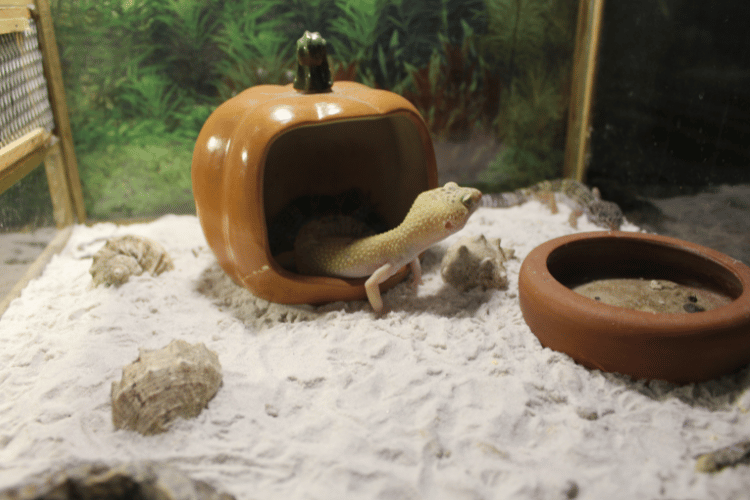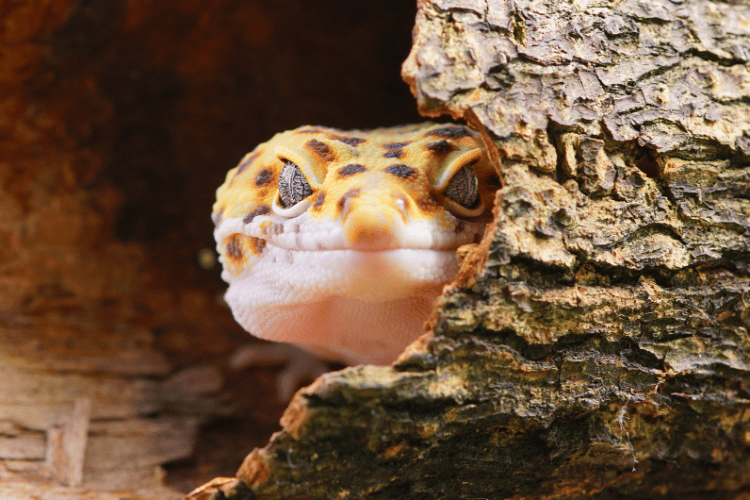Have you woken up one day to check on your pet Leopard gecko only to find one of its toes missing? Like us, geckos have five toes in each limb, and counting only four can be quite alarming to loving owners. But why does this happen? Why are the Leopard gecko toes falling off?
Difficult shedding is one of the primary culprits behind lost toes. Lack of humidity can also be a contributing factor, and then we have other reasons like poor diet, injury, and illness.
In this article, we’ll get a deeper look into the reasons taking away the toes of our beloved crawlers and learn how to prevent them or at least prevent future damage.
Why Do Leopard Geckos Toes Fall Off?
Leopard geckos are popular pet reptiles, but they have delicate toes that are quite flexible, which allows them to climb in tight spaces and on rough surfaces. They can also use their toes to grip insects, which are their primary food source.

Still, being as delicate as they are, they can sometimes fall off. Here are a few reasons why this can happen:
Difficulty Shedding
Leopard geckos shed their skin as they grow. Healthy shedding requires both proper humidity levels and access to a moist hide. If the humidity is too low or the hide is not moist enough, the skin can stick and constrict blood flow.
This causes the toes to eventually fall off if the stuck shed is not removed. Signs of bad shedding include skin sticking on the toes and feet.
Lack of Humidity
Leopard geckos from arid, dry regions struggle more with shedding when kept as pets. Their humidity requirements are higher than what the dry native air provides. Extra misting and a humid hide help compensate for the overly arid conditions.
Leopard geckos need around 30-40% humidity to shed well. If humidity drops too low, such as below 20%, their skin dries out. The excessively dry, thick skin does not shed cleanly and can get stuck. Without quickly fixing low humidity, constriction and loss of toes can occur.
Inadequate Supplements
A poor diet lacking proper calcium and vitamin D3 contributes to bad sheds. The gecko needs these nutrients to develop healthy skin.
Without them, the skin is weaker and more prone to sticking during a shed. Ensuring good supplementation is key to preventing stuck shed and toe loss.
Severe Injury or Illness
Major injuries, bites, burns, or infections can sometimes necessitate toe loss or amputation if severe enough. However, this is a last resort and vets work hard to save as much of the limb as possible.
Do Leopard Geckos Get Their Toes Back?
Unfortunately, no, leopard geckos cannot regrow their toes like some lizards can regenerate their tails. The toes are gone for good once they fall off. However, missing one or two toes generally does not affect the gecko’s ability to walk and climb effectively.
As long as environmental conditions are corrected to prevent future bad sheds, most leopard geckos regain full mobility with a few toes missing. Only more extensive loss of multiple toes on multiple feet would limit their movements.
What Else Can Affect the Toes of Your Leopard Gecko?
Aside from bad sheds and loss of toes, leopard geckos may experience other toe problems needing attention.

Your Gecko’s Toe Turning Black
A blackening toe points to circulation loss from a stuck shed or injury. The constriction cuts off blood flow, causing tissue death and dark discoloration, a condition known as tissue necrosis.
If you notice a darkening of one of the toes, soaking the gecko in lukewarm water for 5-10 minutes can help ease the condition. Further, improving humidity and access to humid hides prevents this from happening to begin with.
If you don’t see any improvement, reach out to your vet or pay them a visit. You may be able to save the toe from falling if you act early enough.
Your Gecko’s Toe Is Bleeding
Injuries from rough surfaces or pulling off the shed can cause a bleeding toe. Gently clean the wound and apply diluted iodine solution two times daily.
Do not pull off more shed as this could damage the healing or healthy tissue. Eliminate any rough decorations in the tank and keep the enclosure clean while the toe heals to prevent infection.
Your Gecko’s Toe Is Bent
An oddly bent toe may be dislocated or healed improperly after an injury. However, it can also signal metabolic bone disease from nutritional deficiency.
This causes weak, easily bent bones and toes. Ensure adequate calcium and D3 intake. Check for other signs like twitching or bumpy limbs. A vet can splint a dislocated toe if needed.
Your Gecko’s Toe Is Broken
Broken toes are very painful and the gecko may avoid using the foot. Suspect a break if the toe appears swollen or twisted abnormally.
Carefully transport the gecko to a vet for x-rays and treatment advice. The toe may require a splint while healing. Ensure their home has safe, solid flooring without high risks of falls leading to injury.
Seeking prompt veterinary care gives the best chance of saving an injured, infected, or dying toe. Do not delay if your leopard gecko exhibits any unusual toe appearance or behavior indicating a problem.
Final Words
Your gecko losing a toe or two might be disheartening, but the good news is that it’s not the end of the world. The Leo will still be able to move around and climb different surfaces as if nothing happened.
However, at this point, it’s your job to prevent whatever caused the toe loss from happening again. Ensure a humid environment and a high-quality diet to give your gecko the best chance of keeping their fragile toes.
- Can Leopard Geckos Eat Silkworms? - March 11, 2024
- Do Leopard Geckos Climb? - March 4, 2024
- Do Leopard Geckos Bask? The Answer Will Surprise You - February 21, 2024
